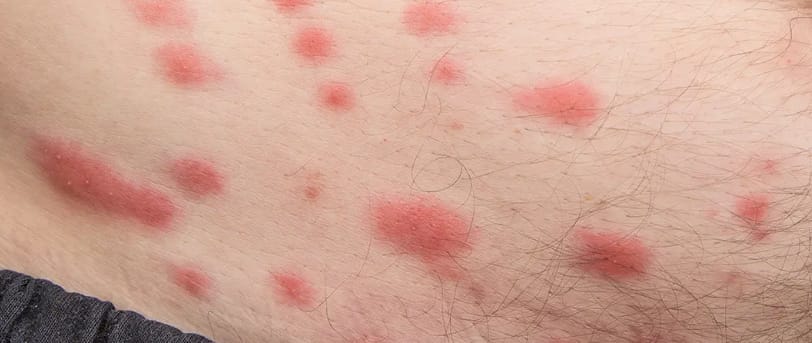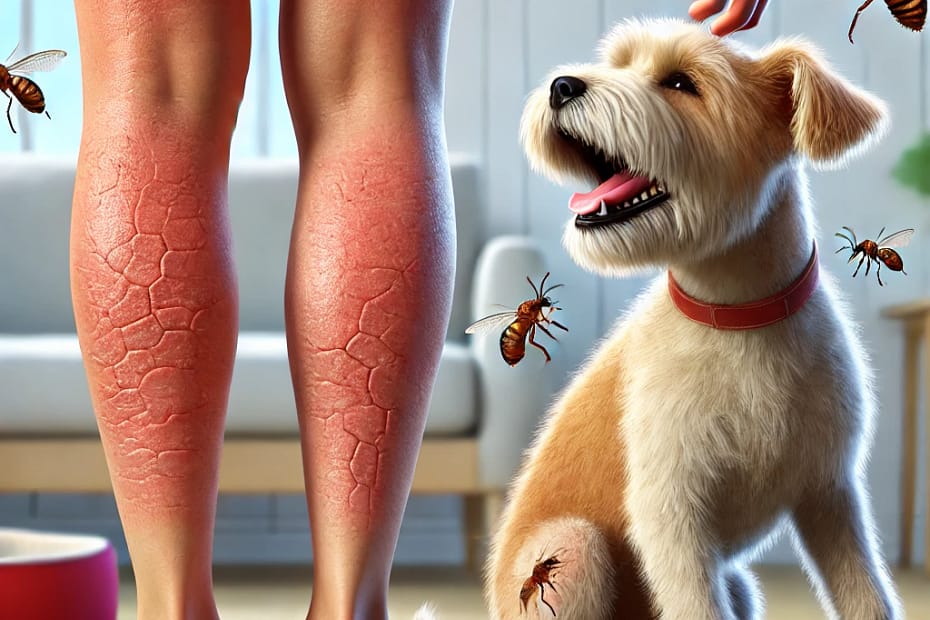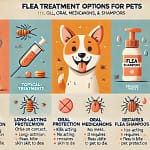Dog fleas (Ctenocephalides canis) themselves are not the primary carriers of typhus, but the more common cat flea (Ctenocephalides felis), which also infests dogs, can transmit Rickettsia typhi or Rickettsia felis, the bacteria responsible for flea-borne typhus.
According to Centre for disease Control and Prevention,
The cat and dog fleas (Ctenocephalides canis and C. felis) may also feed on humans. In addition to being intermediate hosts for cestodes, C. felis can serve as a vector of Bartonella henselae (cat-scratch disease) and Rickettsia felis (feline rickettsiae).
Transmission to Humans

Individuals can become infected with flea-borne typhus via several routes:
Flea Bites: An infected flea can transmit the bacteria into a person’s skin when it bites.
Flea Feces: As fleas feed, they excrete feces that contain the bacteria. If a person scratches the bite area or touches their mucous membranes (such as their eyes, nose, or mouth) after coming into contact with flea feces, the bacteria can enter their body.
It’s crucial to understand that flea-borne typhus is not transmitted between people.
Symptoms in Humans

Signs of infection usually manifest within 1 to 2 weeks after exposure and may comprise:
Fever and chills
Headache
Muscle aches
Nausea and vomiting
Abdominal pain
Cough
Rash (occurs in approximately half of the cases)- While Ctenocephalides canis (dog fleas) primarily infest dogs, they can bite humans, leading to a localized itchy rash with small bumps, often around the legs and ankles.

While most instances are mild, serious complications can arise, necessitating hospitalization.
How do you know you have been bitten by dog or cat flea and not mosquito?
Flea bites are generally straightforward to recognize based on their look, placement, and symptoms. Here’s how to determine whether you’ve been bitten by a flea:
Indicators of a Flea Bite:
Tiny, Red Bumps
Bites manifest as small, red, itchy welts with a slight halo surrounding them.
They may evolve into blisters or scabs if they are scratched.
Clustered or Linear Arrangement
Flea bites typically appear in clusters of 2–3 or in a straight line instead of being solitary.
Frequent Bite Areas
Fleas tend to favor warmer spots and thinner skin, so they usually bite:
Ankles and lower legs (the most frequent sites)
Waistline, groin, or armpits
Behind the knees and elbows
On the feet or between the toes (especially when barefoot)
Severe Itching & Discomfort
The bites can be extremely itchy due to flea saliva causing an allergic response.
Scratching can aggravate irritation and heighten the risk of infection.
Delayed Response
Some individuals may experience instant itchiness, while others might not notice a reaction for several hours or even days after being bitten.
How to Determine If It’s Dog Fleas (and Not Mosquitoes or Bed Bugs)?
- Flea bites are usually found on the lower parts of the body and tend to occur in clusters.
- Mosquito bites are larger, more swollen, and appear sporadically.
- Bed bug bites typically show up in rows (often three bites in a line, referred to as “breakfast, lunch, and dinner”) and are usually found on exposed skin while sleeping.
What to Do If You Get Bitten?
- Clean the area with soap and water.
- Use anti-itch cream (like hydrocortisone) or an antihistamine (such as Benadryl).
- Refrain from scratching to avoid infection.
- If bites become swollen, painful, or infected, consult a doctor.
Prevention
To minimize the likelihood of contracting flea-borne typhus:
Flea Control on Pets: Consistently treat pets for fleas with products recommended by veterinarians.
Environmental Hygiene: Keep living areas clean to discourage rodents and stray animals that might carry fleas.
Personal Protection: When in flea-prone environments, apply EPA-registered insect repellents and avoid contact with wild or stray animals.
By following these preventive strategies, the risk of flea-borne typhus can be significantly decreased.
Treatment
Flea-borne typhus can be effectively managed with antibiotics, particularly doxycycline. Timely diagnosis and treatment are essential to prevent severe illness.
Conclusion
Flea-borne typhus is both avoidable and treatable. Recognizing the ways of transmission and adopting suitable preventive measures are vital to lowering the risk of infection. If symptoms consistent with flea-borne typhus arise, especially after possible exposure to fleas, it is important to seek medical help without delay.

Dr. Suranjan Sarkar is a veterinarian and also a writer and editor for both print and digital with a love for travel, animal, and architecture. Much of his writing has focused on human and animal health and welfare. A life-long pet owner, His two favorite canine quotes are, “Be the kind of person your dog thinks you are,” and “Dogs communicate their feelings honestly and directly. There’s no hidden agenda or manipulation.”









